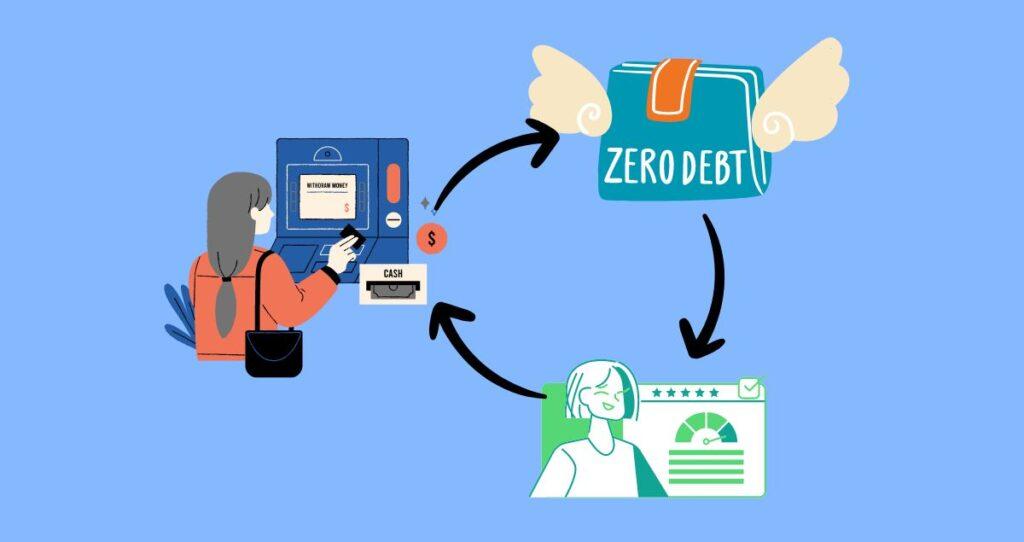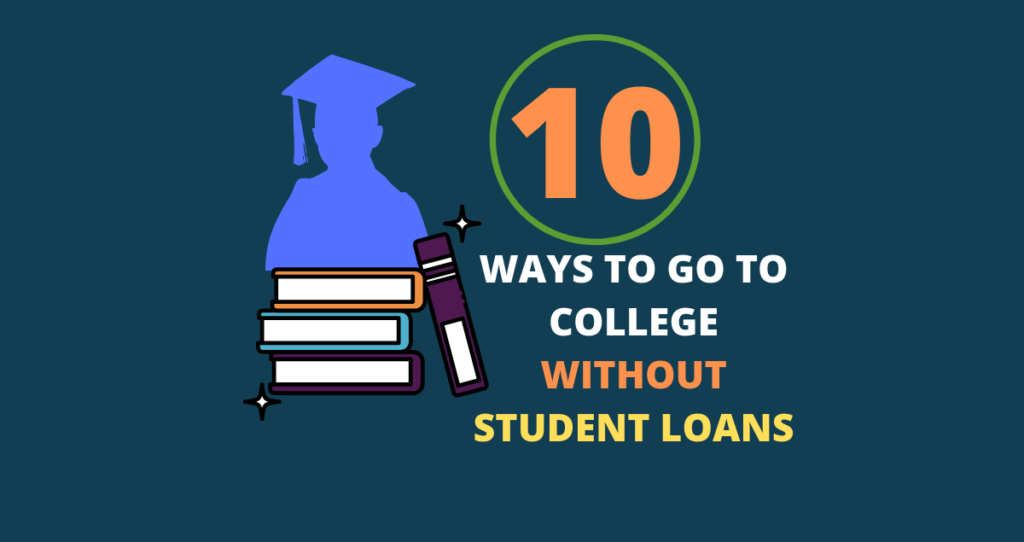Student loan refinance will be right for you if it will result in a lower interest rate and favorable terms. The process to finance your student loan is very simple and straightforward. You just need to check if this is the right path for you, shop around for lenders with lower rates and better terms, and then apply. After you have been approved for the student loan refinance, your new lender will pay off your current student loan in full. You will then start making monthly payments to the new lender.
Not everyone should refinance their loans. Just like other loans, refinancing your student loan makes sense only if you will end up saving money. For example, if market rates went much lower from the day you got your loans, you can save a lot of money in interest charges by refinancing your loans.
On the other hand, if the interest rates did not change that much, you might end up losing money when you refinance your student loan. This is because you will have to pay loan closing fees. Unless you qualify for a much lower interest rate, you might not recover the amount you spent during the student loan refinancing process.
This article will show you exactly how to refinance your student loans step by step.
1. Check if refinancing your student loan is right for you
Is refinancing your student loan right for you? This is a very important question you need to answer before moving forward. Refinancing federal student loans comes at a greater risk compared to private student loans. What makes federal student loans great in the first place are income-driven payments, loan forgiveness, forbearance, and loan deferment. By refinancing your federal student loans you end up losing all these benefits and many more.
For example, if you think your income will decrease in the near future, it would be a bad idea to refinance your federal student loan. This is because you could easily qualify for a lower monthly payment that reflects a decrease in your new income.
Private student loans, on the other hand, do not come with these benefits. So, it would make sense to refinance them if you think the cost of refinancing your student loan will be much lower compared to how much money you will save.
You might also like: Can you get a student loan with bad credit?
2. Shop for the right lender
Your next task is to find a lender who will be right for you. Some lenders do not offer student loans. Others accept certain criteria to refinance your loan. For example, if you did not graduate and having trouble with your student loan, you’ll need to find a lender who does not require a college degree.
Many lenders have different refinance requirements. So, go ahead and find a handful of lenders who meet your specific criteria.
3. Increase your credit score
In order to easily qualify for a lower interest rate, you will need to have a good credit score. Your lender will use your credit score to estimate your creditworthiness. A good credit score shows that it is less risky to lend you money. For this reason, you will easily qualify for a low-interest rate that will align with your student loan refinancing goals.
4. Get pre-approved from multiple lenders
Just because you have found the right lenders does not mean you will be approved by all of them. Also, the interest rate you will pay once approved will also be different. In order to choose the best lender, you’ll need to get quotes from each lender and compare them.
What you need is a lender with the lowest interest rate and favorable terms. A lower interest rate will easily help you recover the cost of student loan refinance and save you money in the process. You might also qualify for a shorter or longer term to help you pay off the loan much faster or slow as you wish.
5. Decide who your next lender will be
At this point, you have been pre-approved by multiple lenders. You have also compared their rates and terms. Now, it is a time you make the most important decision about your student loan refinance. You need to choose a lender and the terms of the loan.
The following are two options to choose from.
- The first option is a fixed-rate loan for a given number of years. Most lenders recommend this option because your interest rate on the loan stays the same for the entire duration of the loan. For example, if you qualify for a 4.3% fixed-rate loan for 15 years, your interest rate will stay the same no matter the changes in market rates. A fixed-rate loan allows you to consistently pay the same monthly payments for the duration of the loan.
- The second option is a variable-rate loan. With this option, the interest you pay on your new loan will change over time based on changes in market rates. This option will benefit you only if market rates are currently high and expected to go lower over time. That is the interest rate you pay will continuously go lower to reflect the changes in market rates. The downside of variable rates, however, is that if market rates increase over time, your rate will also go higher. Unless you have the financial means to cover higher interest charges, you might find it difficult to make your monthly payments. For example, if you had a variable rate in 2021, your rate could have ended up almost doubling in 2022 due to a steep increase in market rates.
After choosing the terms of the loan, you will also have to choose the length of the loan. If you think you can aggressively pay off your loan much faster, choose a shorter term. For example, you can elect to pay off your loan in 5 years instead of 10 years or 15 years. A shorter length comes with a higher monthly payment but it will save you money. A longer-term on the other hand will come with a lower monthly payment. However, it will cost you more money in interest.
6. Apply for the loan
After choosing the right lender, and the interest rate terms, you will then apply for the loan. The application for a loan is simple and most creditors allow you to complete every process online. Be prepared to provide proof of income, your full name, mailing and residency addresses, social security number, proof of graduation, etc. You might also need to provide proof of past payments to make sure that you did not skip some payments, have late payments, etc.
Before you are approved for the loan, the lender must check your credit file. This is also known as a hard pull on your credit which results in a hard inquiry on your credit reports. You should expect your credit score to go lower by 5 to 6 points from a single hard inquiry.
You might also like: 10 ways to go to college without student loans
7. Accept the loan and sign the final documents
After getting accepted for the loan, you must sign the final documents that bind you with your new lender. In order words, you will need to accept the loan, its terms, and payment structures. In case you change your mind, you will have a three days rescission period during which you can cancel the deal.
After accepting the loan, the new lender will pay off your old student loan in full. You will then start making payments to the new lender.
How to qualify for student loan refinance?
Before you refinance your student loan, the new lender will make sure that there is less risk involved in lending you money. At the end of the day, lending money is all about risk assessment. The riskier it is to lend you money, the lower the chances your application will be approved. That is why you need to do whatever you can to increase your odds of getting the loan.
The following are key factors to consider before you start the refinance process.
- Increase your credit score. No lender wants to take you under his wing if you have a bad credit score. Bad credit is a direct indication that you are a risky borrower. That is you don’t pay your bills on time, you spend excessively, and are financially irresponsible. You must increase your credit score before you refinance your student loan. Having a credit score in the 700s can easily seal the deal. Lenders will also take a credit score in the 600s but the interest rate will be higher. Good credit always gets you better rates.
- Lower your debt-to-income ratio. Also known as the DTI ratio, this ratio compares your current debt with your income. You can calculate your DTI ratio by diving your current monthly debt payment with your current monthly gross income. A higher ratio shows that you have too much debt already which could justify why you are having trouble paying off your loan. No lender will take on this risk knowingly. Keeping your DTI ratio under 28% is always a good rule of thumb.
- Have proof of income. Your lender will need assurance that you can easily make your monthly payments. That is why proof of stable income is a critical factor to get approved for student loan refinance.
The bottom line
The process of refinancing your student loan will start by deciding if you really need to refinance the loan. The main purpose of your student loan refinance is to get lower interest rates with better terms. That is why you must shop around for the best lender in town and pick one that satisfies your needs. To increase your chances of securing a lower rate, you will need to increase your credit score. After selecting the right lender, you will need to submit an official loan application and get approved. Your new lender will cover your student loan and you will start making payments toward your new loan.









